Annexation
Annexation (Latin ad, to, and nexus, joining) is the administrative action[1] and concept in international law relating to the forcible acquisition of one state's territory by another state and is generally held to be an illegal act.[2] It is distinct from conquest, which refers to the acquisition of control over a territory involving a change of sovereignty,[3][4] and differs from cession, in which territory is given or sold through treaty, since annexation is a unilateral act where territory is seized and held by one state.[5] It usually follows military occupation of a territory.[1]

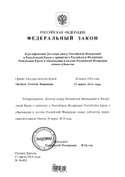
.jpg)
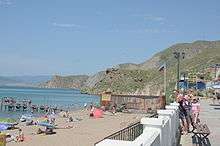
Annexation can be legitimized via general recognition by international bodies (i.e. other countries and intergovernmental organisations).[5][6][1]
Evolution of international law
Acquisition of title
International law regarding the use of force by states has evolved significantly in the 20th century.[7] Key agreements include the 1907 Porter Convention, the 1920 Covenant of the League of Nations and the 1928 Kellogg–Briand Pact,[7] culminating in Article 2(4) of Chapter I of the United Nations Charter, which is in force today: "All Members shall refrain in their international relations from the threat or use of force against the territorial integrity or political independence of any state, or in any other manner inconsistent with the Purposes of the United Nations".[7] Since the use of force against territorial integrity or political independence is illegal, the question as to whether title or sovereignty can be transferred in such a situation has been the subject of legal debate.[8]
It is generally held that countries are under obligation to abide by the Stimson Doctrine that a state: "cannot admit the legality of any situation de facto nor... recognize any treaty or agreement entered into between those Governments... not... recognize any situation, treaty or agreement which may be brought about by means contrary to the covenants and obligations of the Pact of Paris of August 27, 1928".[9]
These principles were reconfirmed by the 1970 Friendly Relations Declaration.[10]
Protection of civilians
During World War II, the use of annexation deprived whole populations of the safeguards provided by international laws governing military occupations.
The Fourth Geneva Convention (GCIV) of 1949 amplified the Hague Conventions of 1899 and 1907 with respect to the question of the protection of civilians.[11]
The authors of the Fourth Geneva Convention made a point of giving the rules regarding inviolability of rights "an absolute character",[12] thus making it much more difficult for a state to bypass international law through the use of annexation.[12] GCIV Article 47, in the first paragraph in Section III: Occupied territories, restricted the effects of annexation on the rights of persons within those territories:
Protected persons who are in occupied territory shall not be deprived, in any case or in any manner whatsoever, of the benefits of the present Convention by any change introduced, as the result of the occupation of a territory, into the institutions or government of the said territory, nor by any agreement concluded between the authorities of the occupied territories and the Occupying Power, nor by any annexation by the latter of the whole or part of the occupied territory.
Examples before 1949


By Britain
Boer republics
The independent, self-governed Boer Republics known as the Orange Free State and the South African Republic, created by the Dutch-speaking inhabitants of the Cape Colony, were annexed to the British Empire in 1902 at the end of the Second Boer War (1899–1902).[13]
By the United States
Texas
Hawaii
By France
Leeward Islands
Tahiti
By Austria-Hungary
By Japan
By India
By Spain
Examples since 1949
By China
The Qing rule over Tibet was established after a Qing expedition force defeated the Dzungars who occupied Tibet in 1720, and lasted until the fall of the Qing dynasty in 1912. The Republic of China had no effective control over Tibet from 1912 to 1951;[14] however, in the opinion of the Chinese government, this condition does not represent Tibet's independence as many other parts of China also enjoyed de facto independence when the Chinese nation was torn by warlordism, Japanese invasion, and civil war.[15]
Tibet came under the control of the People's Republic of China (PRC) after attempts by the Government of Tibet to gain international recognition, efforts to modernize its military, negotiations between the Government of Tibet and the PRC, a military conflict in the Chamdo area of western Kham in October 1950, and the eventual acceptance of the Seventeen Point Agreement by the Government of Tibet under Chinese pressure in October 1951.[16][17] In some Western opinions, the incorporation of Tibet into China is viewed as an annexation.[18][19][20]
By India
Portuguese India

In 1954, the residents of Dadra and Nagar Haveli, a Portuguese enclave within India, ended Portuguese rule with the help of nationalist volunteers. From 1954 to 1961, the territory enjoyed de facto independence. In 1961, the territory was merged with India after its government signed an agreement with the Indian government.
In 1961, India and Portugal engaged in a brief military conflict over Portuguese-controlled Goa and Daman and Diu. India invaded and conquered the areas after 36 hours of fighting, thus ending 451 years of Portuguese colonial rule in India. The action was viewed in India as a liberation of historically Indian territory; in Portugal, however, the loss of both enclaves was seen as a national tragedy. A condemnation of the action by the United Nations Security Council (UNSC) was vetoed by the Soviet Union.[21] Goa and Daman and Diu were incorporated into India.
Sikkim

During the British colonial rule in India, Sikkim had an ambiguous status, as an Indian princely state or as an Indian protectorate. Prior to Indian independence, Jawaharlal Nehru, acting as the leader of Executive Council, agreed that Sikkim would not be treated as an Indian state. Between 1947 and 1950, Sikkim enjoyed de facto independence. However, the Indian independence spurred popular political movements in Sikkim and the ruler Chogyal came under pressure. He requested Indian help to quell the uprising, which was offered. Subsequently, in 1950, India signed a treaty with Sikkim bringing it under its suzerainty, and controlling its external affairs, defence, diplomacy and communications. A state council was established in 1955 to allow for constitutional government under the Sikkimese monarch. Meanwhile, trouble was brewing in the state after the Sikkim National Congress demanded fresh elections and greater representation for the Nepalese. In 1967 India and China went to war in Sikkim, Cho La incident where a Chinese occupation was attempted and repulsed. In 1973, riots in front of the palace led to a formal request for protection from India. The Chogyal was proving to be extremely unpopular with the people. In 1975, the Kazi (prime minister) appealed to the Indian Parliament for a change in Sikkim's status so that it could become a state of India. In April, the Indian Army moved into Sikkim, seizing the city of Gangtok and disarming the Palace Guards. A referendum was held in which 97.5% of the voting people (59% of the people entitled to vote) voted to join the Indian Union. A few weeks later, on May 16, 1975, Sikkim officially became the 22nd state of the Indian Union and the monarchy was abolished.[22]
British annexation of Rockall

On 18 September 1955 at precisely 10:16 am, in what would be the final territorial expansion of the British Empire, Rockall was declared officially annexed by the British Crown when Lieutenant-Commander Desmond Scott RN, Sergeant Brian Peel RM, Corporal AA Fraser RM, and James Fisher (a civilian naturalist and former Royal Marine), were deposited on the island by a Royal Navy helicopter from HMS Vidal (coincidentally named after the man who first charted the island). The team cemented in a brass plaque on Hall's Ledge and hoisted the Union Flag to stake the UK's claim.[23] However, any effect of this annexation on valuable maritime rights claims under UNCLOS in the waters beyond 12 nautical miles from Rockall are neither claimed by Britain nor recognised by Denmark (for the Faroe Islands), Ireland or Iceland.
Eritrea
In 1952, Ethiopian Emperor Haile Selassie orchestrated a federation with Eritrea. He dissolved it in 1962 and annexed Eritrea, resulting in the Eritrean War of Independence.[24]
By Indonesia
Western New Guinea
Following a controversial plebiscite in 1969, West Papua or Western New Guinea was annexed by Indonesia.[25] West Papua is the western half of the island of New Guinea and smaller islands to its west. The separatist Free Papua Movement (OPM) has engaged in a small-scale yet bloody conflict with the Indonesian military since the 1960s.[26]
East Timor
Following an Indonesian invasion in 1975, East Timor was annexed by Indonesia and was known as Timor Timur. It was regarded by Indonesia as the country's 27th province, but this was never recognised by the United Nations. The people of East Timor resisted Indonesian forces in a prolonged guerrilla campaign.
Following a referendum held in 1999 under a UN-sponsored agreement between the two sides, the people of East Timor rejected the offer of autonomy within Indonesia. East Timor achieved independence in 2002 and is now officially known as Timor-Leste.
Western Sahara
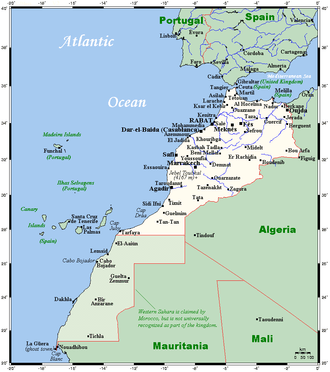
In 1975, and following the Madrid Accords between Morocco, Mauritania and Spain, the latter withdrew from the territory and ceded the administration to Morocco and Mauritania. This was challenged by an independentist movement, the Polisario Front that waged a guerrilla war against both Morocco and Mauritania. In 1979, and after a military putsch, Mauritania withdrew from the territory that left it controlled by Morocco. A United Nations peace process was initiated in 1991, but it has been stalled, and as of mid-2012, the UN is holding direct negotiations between Morocco and the Polisario front to reach a solution to the conflict. The Sahrawi Arab Democratic Republic is a partially recognized state that has claimed the entire region since 1975.
West Bank
West Bank annexation by Jordan
The part of former Mandatory Palestine occupied by Jordan during the 1948 Arab–Israeli War, which some Jews call "Judea and Samaria", was renamed "the West Bank". It was annexed to Jordan in 1950 at the request of a Palestinian delegation.[27] It had been questioned, however, how representative that delegation was, and at the insistence of the Arab League, Jordan was considered a trustee only.[28] Only the United Kingdom and Pakistan recognized the annexation by Jordan.[29] It was not condemned by the UNSC and it remained under Jordanian rule until 1967 when it was occupied by Israel. Jordan did not officially relinquish its claim to rule the West Bank until 1988.[30] Israel has not taken the step of annexing the territory (except for parts of it that was made part of the Jerusalem Municipality), rather, there were enacted a complex (and highly controversial) system of military government decrees in effect applying Israeli law in many spheres to Israeli settlements.
East Jerusalem annexation by Israel
During the 1967 Six-Day War, Israel captured East Jerusalem, a part of the West Bank, from Jordan. It has remained occupied until the present day. On June 27, 1967, Israel unilaterally extended its law and jurisdiction to East Jerusalem and some of the surrounding area, incorporating about 70 square kilometers of territory into the Jerusalem Municipality. Although at the time Israel informed the United Nations that its measures constituted administrative and municipal integration rather than annexation, later rulings by the Israeli Supreme Court indicated that East Jerusalem had become part of Israel. In 1980, Israel passed the Jerusalem Law as part of its Basic Law, which declared Jerusalem the "complete and united" capital of Israel. In other words, Israel purported to annex East Jerusalem.[31][32][33] The annexation was declared null and void by UNSC Resolutions 252, 267, 271, 298, 465, 476[34] and 478.[35]

Jewish neighborhoods have since been built in East Jerusalem, and Israeli Jews have since also settled in Arab neighborhoods there, though some Jews may have returned from their 1948 expulsion after the Battle for Jerusalem. Only Costa Rica recognized Israel's annexation of East Jerusalem, and those countries who maintained embassies in Israel did not move them to Jerusalem.[36] The United States Congress has passed the Jerusalem Embassy Act, which recognizes Jerusalem as the united capital of Israel and requires the relocation of the U.S. embassy there, but the bill has been waived by presidents Clinton, Bush, and Obama on national security grounds. President Trump has begun the controversial process of moving the United States embassy to Jerusalem, but has not recognized the annexation of East Jerusalem.
By Israel
Israel occupied two-thirds of the Golan Heights from Syria during the 1967 Six-Day War, and subsequently built Jewish settlements in the area. In 1981, Israel passed the Golan Heights Law, which extended Israeli "law, jurisdiction, and administration" to the area, including the Shebaa farms area. This declaration was declared "null and void and without international legal effect" by UNSC Resolution 497. The only state that recognized the annexation is the Federated States of Micronesia.
The vast majority of Syrian Druze in Majdal Shams, the largest Syrian village in the Golan, have held onto their Syrian passports. When Israel annexed the Golan Heights in 1981, 95% of the Majdal Shams residents refused Israeli citizenship, and are still firmly of that opinion, in spite of the Syrian Civil War.[37]
On 29 November 2012, the United Nations General Assembly reaffirmed it was "[d]eeply concerned that Israel has not withdrawn from the Syrian Golan, which has been under occupation since 1967, contrary to the relevant Security Council and General Assembly resolutions," and "[s]tress[ed] the illegality of the Israeli settlement construction and other activities in the occupied Syrian Golan since 1967."[38] The General Assembly then voted by majority, 110 in favour to 6 against (Canada, Israel, Marshall Islands, Federated States of Micronesia, Palau, United States), with 59 abstentions, to demand a full Israeli withdrawal from the Syrian Golan Heights.[38]
On March 25, 2019, the United States recognized the Golan Heights as sovereign Israeli territory.[39] In response, United Nations Secretary-General António Guterres stated "the status of Golan has not changed,"[40][41] and the decision received worldwide condemnation with European members of the United Nations Security Council noting "We raise our strong concerns about the broader consequences of recognizing illegal annexation and also about broader regional consequences." and that "Annexation of territory by force is prohibited under international law," adding that unilateral changes to borders violate "the rules-based international order and the UN Charter."[42]
By North Vietnam

North Vietnam de facto annexed South Vietnam following the military defeat of the South Vietnamese army in April 1975.[43] The communist regime of the Socialist Republic of Vietnam had officially reunified the country.
By Iraq
After being allied with Iraq during the Iran–Iraq War (largely due to desiring Iraqi protection from Iran), Kuwait was invaded and annexed by Iraq (under Saddam Hussein) in August 1990. Hussein's primary justifications included a charge that Kuwaiti territory was in fact an Iraqi province, and that annexation was retaliation for "economic warfare" Kuwait had waged through slant drilling into Iraq's oil supplies. The monarchy was deposed after annexation, and an Iraqi governor installed.
United States president George H. W. Bush ultimately condemned Iraq's actions, and moved to drive out Iraqi forces. Authorized by the UNSC, an American-led coalition of 34 nations fought the Gulf War to reinstate the Kuwaiti Emir. Iraq's invasion (and annexation) was deemed illegal and Kuwait remains an independent nation today.
By Russia
In March 2014, Russia annexed the Crimean Peninsula, which had been a part of Ukraine and administers the territory as two federal subjects — the Republic of Crimea and the federal city of Sevastopol.[44] Russia rejects the view that this was an annexation and regard it as an accession to the Russian Federation of a state that had just declared independence from Ukraine following a referendum, and considers it secession as a result of irredentism. A term often used in Russia to describe these events is "re-unification" (воссоединение) to highlight the fact that Crimea was part of Russian Empire and later Russian SSR.
By Norway
One example of a claimed annexation after World War II is the Kingdom of Norway's southward expansion of the dependent territory Queen Maud Land. On most maps there had been an unclaimed area between Queen Maud Land's borders of 1939 and the South Pole until June 12, 2015 when Norway formally claimed to have annexed that area.[45] The Antarctic Treaty, however, states: "The treaty does not recognize, dispute, nor establish territorial sovereignty claims; no new claims shall be asserted while the treaty is in force".
Gallery
 Annexation of Portuguese India by India in 1961
Annexation of Portuguese India by India in 1961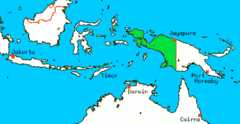 Western New Guinea was formally annexed by Indonesia in 1969
Western New Guinea was formally annexed by Indonesia in 1969 Indonesia annexed East Timor in 1976
Indonesia annexed East Timor in 1976 Morocco officially annexed Western Sahara in 1976
Morocco officially annexed Western Sahara in 1976
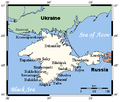
See also
- Municipal Annexation
- Irredentism
- List of military occupations
- List of national border changes since World War I
References
- Rothwell et al. 2014, p. 360: "Annexation is distinct from cession. Instead of a State seeking to relinquish territory, annexation occurs when the acquiring State asserts that it now holds the territory. Annexation will usual follow a military occupation of a territory, when the occupying power decides to cement its physical control by asserting legal title. The annexation of territory is essentially the administrative action associated with conquest. Mere conquest alone is not enough, but rather the conquering State must assert it is now sovereign over the territory concerned. For example, the defeat of Germany and Japan in 1945 led to their occupation by the Allies for a number of years, but the States themselves were not absorbed by the Allied Powers part of their respective territories. Examples of annexation in contemporary practice are not common, and are generally viewed as illegal."
- Hofmann 2013, p. i: "Annexation means the forcible acquisition of territory by one State at the expense of another State. It is one of the principal modes of acquiring territory... in contrast to acquisition a) of terra nullius by means of effective occupation accompanied by the intent to appropriate the territory; b) by cession as a result of a treaty concluded between the States concerned (Treaties), or an act of adjudication, both followed by the effective peaceful transfer of territory; c) by means of prescription defined as the legitimization of a doubtful title to territory by passage of time and presumed acquiescence of the former sovereign; d) by accretion constituting the physical process by which new land is formed close to, or becomes attached to, existing land. Under present international law, annexation no longer constitutes a legally admissible mode of acquisition of territory as it violates the prohibition of the threat or use of force. Therefore annexations must not be recognized as legal."
- Marcelo G Kohen (2017). "Conquest". In Frauke Lachenmann; Rüdiger Wolfrum (eds.). The Law of Armed Conflict and the Use of Force: The Max Planck Encyclopedia of Public International Law. Oxford University Press. p. 289. ISBN 978-0-19-878462-3.
Conquest and annexation are not synonymous either. The latter term is used within and outside the context of armed conflicts, to designate a unilateral decision adopted by a State in order to extent its sovereignty over a given territory. In many cases, the effective occupation of a terra nullius was followed by a declaration of annexation, in order to incorporate the territory under the sovereignty of the acquiring State. In the context of armed conflicts, annexation is the case in which the victorious State unilaterally declares that it is henceforth sovereign over the territory having passed under its control as a result of hostilities. This attempt at producing a transfer of sovereignty through the exclusive decision of the victor is not generally recognized as valid, both in classical and in contemporary international law. An example of a case of annexation preceding the adoption of the UN Charter is the annexation of Bosnia-Herzegovina by the Austro-Hungarian Empire in 1908. The annexation was not recognized by the major Powers and required a modification of the 1878 Treaty of Berlin which had simply granted Austria-Hungary the right to administer the territory. Another example is the annexation of Ethiopia by Italy in 1936. Examples of purported contemporary annexations are the Golan Heights annexed by Israel in 1980 and Kuwait by Iraq in 1990, both declared null and void by the Security Council, or the incorporation of Crimea and the City of Sebastopol in the Russian Federation.
- Kohen, p.288, refers to clause 101 of the PERMANENT COURT OF INTERNATIONAL JUSTICE, 1933, April 5th, General List: No. 43. TWENTY-SIXTH SESSION, LEGAL STATUS OF EASTERN GREENLAND: "Conquest only operates as a cause of loss of sovereignty when there is war between two States and by reason of the defeat of one of them sovereignty over territory passes from the loser to the victorious State."
-

- "Annexation". Encyclopædia Britannica. Encyclopædia Britannica Online. Retrieved 20 March 2014.
Unlike cession, whereby territory is given or sold through treaty, annexation is a unilateral act made effective by actual possession and legitimized by general recognition.
- Jennings & Kohen 2017, p. 80.
- Jennings & Kohen 2017, p. 81.
- Hofmann 2013, p. ii: "...States are under a legal obligation to abide by the Stimson Doctrine and not to recognize as lawful territorial changes effected by means of annexation. Moreover, even the annexation of the entire territory of a State does not result in the automatic extinction of that State as a subject of international law notwithstanding that it no longer has the capacity to act as such since it cannot exercise sovereign and effective control over any territory."
- Aust 2010, p. 36.
- "Convention (IV) relative to the Protection of Civilian Persons in Time of War. Geneva, 12 August 1949. Commentary - Art. 47. Part III : Status and treatment of protected persons #Section III : Occupied territories". ICRC. Retrieved 20 March 2014.
it was obvious that they were in fact always subservient to the will of the Occupying Power. Such practices were incompatible with the traditional concept of occupation (as defined in Article 43 of the Hague Regulations of 1907)
- Convention (IV) relative to the Protection of Civilian Persons in Time of War. Geneva, 12 August 1949.Commentary on Part III : Status and treatment of protected persons #Section III : Occupied territories Art. 47 by the ICRC
- "'No end of a lesson': The Boer War, 1899-1902". National Portrait Gallery.
- Freeman, Lesley (2013). Running From Tenda Gyamar: A Voluteer's Story of Life with the Refugee Children of Tibet. Winchester, UK: Mantra Books. p. 5. ISBN 978-1-78099-853-4.
With the collapse of the Chinese Empire in 1911, Tibet Declared its independence.
- Grunfeld, 1996, p256
- Anne-Marie Blondeau; Katia Buffetrille (2008). Authenticating Tibet: Answers to China's 100 Questions. University of California Press. p. 61. ISBN 978-0-520-24464-1. Archived from the original on 23 June 2016.
It was evident that the Chinese were not prepared to accept any compromises and that the Tibetans were compelled, under the threat of immediate armed invasion, to sign the Chinese proposal.
- Tsepon Wangchuk Deden Shakabpa (October 2009). One Hundred Thousand Moons: An Advanced Political History of Tibet. BRILL. pp. 953, 955. ISBN 978-90-04-17732-1.
- Carlson, Allen (June 2, 2020). "What's in store for Hong Kong? Look at Tibet". The Washington Post.
- Matthew Wills (23 May 2016). "Tibet and China 65 Years Later: Tibet was annexed by the Chinese 65 years ago. The struggle for Tibetan independence has continued ever since". JSTOR Daily. Archived from the original on 1 July 2019.
- "Tibet Through Chinese Eyes", The Atlantic, 1999, archived from the original on 19 May 2017,
In Western opinion, the "Tibet question" is settled: Tibet should not be part of China; before being forcibly annexed, in 1951, it was an independent country.
- "The United Nations Security Council S/5033". www.un.org. Retrieved 17 July 2017.
- "Did India have a right to annex Sikkim in 1975?". India Today. February 18, 2015.
- BBC staff. "On this day: 21 September 1955: Britain claims Rockall". BBC. Retrieved 15 August 2018.
- "Eritrea profile - Timeline". BBC News. 15 November 2018.
- "How the UN Failed West Papua". The Diplomat. 19 September 2016.
- Report claims secret genocide in Indonesia – University of Sydney
- Archived October 2, 2011, at the Wayback Machine
- Arab League Session: 12-II Date: May 1950
- Marshall J. Berger, Ora Ahimeir (2002). Jerusalem: a city and its future. https://books.google.com/books?id=FGOY5oDGGLUC&pg=PA145: Syracuse University Press. pp. 145. ISBN 978-0-8156-2912-2.CS1 maint: location (link)
- Romano, Amy (2003). A Historical Atlas of Jordan. The Rosen Publishing Group. p. 51. ISBN 978-0-8239-3980-0.
- Sela, Avraham. "Jerusalem." The Continuum Political Encyclopedia of the Middle East. Ed. Avraham Sela. New York: Continuum, 2002. pp. 391-498.
- Frank, Mitch. Understanding the Holy Land: Answering Questions about the Israeli-Palestinian Conflict. New York: Viking, 2005. p. 74.
- "A/35/508-S/14207 of 8 October 1980." Archived June 12, 2012, at the Wayback Machine UNISPAL - United Nations Information System on the Question of Palestine. 8 October 1980. 8 June 2008
- UNSC Resolutions referred to in UNSC res 476 - 252, 267, 271, 298, 465
- UNSC res 478 Archived 2012-01-05 at the Wayback Machine
- Lustick, Ian S. (16 January 1997). "Has Israel Annexed East Jerusalem?". Middle East Policy Council Journal. 5 (1): 34–45. doi:10.1111/j.1475-4967.1997.tb00247.x.
- "Syria: 'We still feel Syrian,' say Druze of Golan Heights".
- "UN Doc A/67/L.24". Archived from the original on 2012-12-02.
- "Trump formally recognises Israeli sovereignty over Golan Heights". Al Jazeera. Retrieved March 25, 2019.
- "Trump recognizes Golan Heights as Israeli, boosting Netanyahu and angering Syria". Reuters. March 25, 2019. Retrieved March 25, 2019.
- "U.N. chief clear that Golan status has not changed: spokesman". Reuters. March 25, 2019 – via www.reuters.com.
- "Trump's Golan proclamation gathers international condemnation". DW. March 26, 2019. Retrieved April 22, 2020.
- "The Timeline of the Political History of Vietnam ". San José State University.
- "Putin signs laws on reunification of Republic of Crimea and Sevastopol with Russia". ITAR TASS. 21 March 2014. Retrieved March 21, 2014.
- Rapp, Ole Magnus. "Norge utvider Dronning Maud Land helt frem til Sydpolen - Aftenposten". Aftenposten.no. Retrieved 2016-08-08.
Further reading
| Look up annexation in Wiktionary, the free dictionary. |
- Aust, Anthony (2010). Handbook of International Law. Cambridge University Press. ISBN 978-1-139-48578-4.CS1 maint: ref=harv (link)
- Hofmann, Rainer (2013). "Annexation". Max Planck Encyclopedia of Public International Law. Oxford University Press.CS1 maint: ref=harv (link)
- Adam Roberts. Transformative military occupation: applying the laws of war and human rights, 100 The American Journal of International Law. vol 100 pp. 580–622 (2006)
- Daniel Högger (2015). The Recognition of States. LIT Verlag Münster. ISBN 978-3-643-80196-8.
- Tanisha M. Fazal (30 October 2011). State Death: The Politics and Geography of Conquest, Occupation, and Annexation. Princeton University Press. ISBN 978-1-4008-4144-8.
- Jennings, R. Y.; Kohen, Marcelo (1 April 2017). The acquisition of territory in international Law with a New Introduction by Marcelo G. Kohen. Manchester University Press. ISBN 978-1-5261-1718-2.CS1 maint: ref=harv (link)
- Rothwell, Donald; Kaye, Stuart; Akhtarkhavari, Afshin; Davis, Ruth (2014). "6.6 Cession and Annexation". International Law: Cases and Materials with Australian Perspectives. Cambridge University Press. ISBN 978-1-107-69119-3.CS1 maint: ref=harv (link)